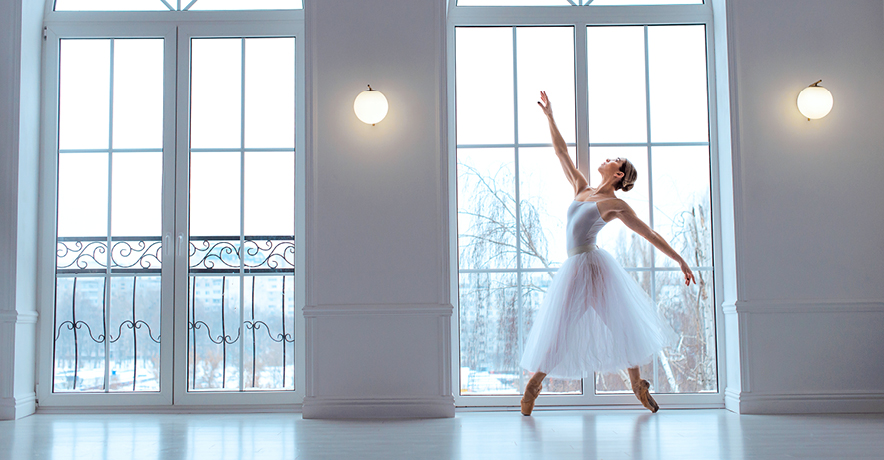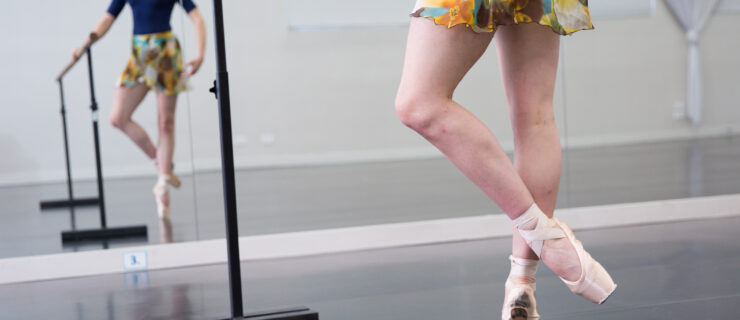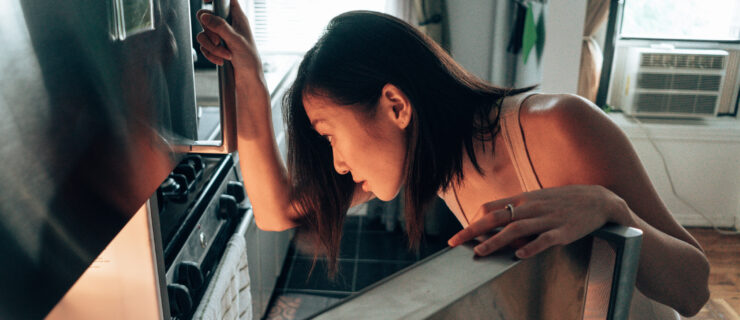Psychology of Space: How a Studio or Stage Affects Your Movement and Mindset
Melody Mennite will never forget her first class at the newly built, state-of-the-art Houston Ballet Center for Dance in 2011. “ ‘I’ll chase you,’ ” she remembers saying to fellow dancer Allison Miller as they prepared for grand allégro. “We wanted to see who could travel the most,” Mennite says, “and we just ended in a puddle of giggles and elation because we had so much space to move.”
Your space, be it a studio or stage, can have a big impact on your performance. “Your senses constantly take in your surroundings and tell you something,” says Eve Klein, an environmental psychologist and architect. Environmental psychology studies the impact that spaces have on people, and people on spaces. Commonly recognized senses—sight, sound, smell, touch, and taste—as well as lesser-known senses, like vestibular (awareness of your body in space) and interoceptive (sensing signals from inside the body), impact your day-to-day functioning in the spaces around you.
People have embodied responses to environmental stimuli, says Klein, with preferences that they are not even conscious of. For dancers, these preferences impact both your movement and your mindset.
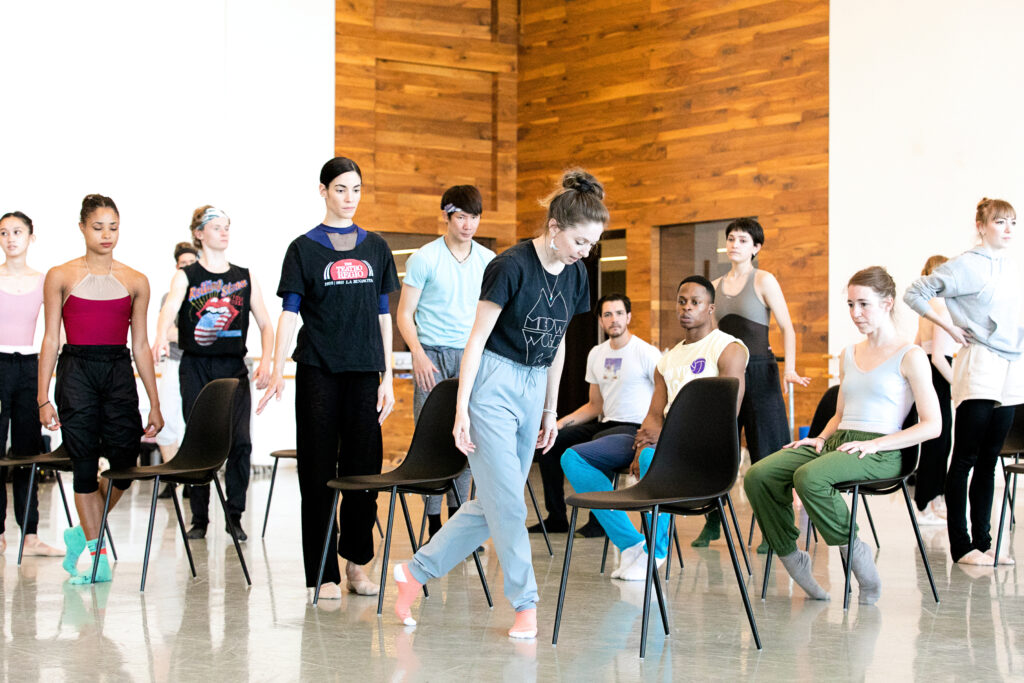
How Your Space Affects Your Movement
“Our senses take in stimuli that cue behavior,” Klein says. If a score is hard to hear, you may dance timidly. If a floor feels slippery, you may travel less. If your studio ceilings are low, you may approach grand allégro more tentatively.
How you feel physically in space is called your vestibular sense. The less obstructed you feel, the less likely your vestibular sense will cue you to limit your movement. And if you are accustomed to training in a certain space, these vestibular concerns can linger in your subconscious when you move to a different studio or theater—making certain movements that were previously limited due to space constraints feel more hesitant than others.
How Your Space Affects Your Mindset
Some spaces can boost mindset. “Connection to nature is inarguably beneficial for human health,” Klein says. Biophilic architecture, which helps bring the outdoors in, incorporates natural elements like water features, organic finishes, and indoor landscaping. For instance, in many newly constructed dance spaces, floor-to-ceiling windows ensure equitable access to natural light. Mennite says Houston Ballet’s large windows affect how she moves. “This connection to the natural world gives me a sense of freedom within my own body.”
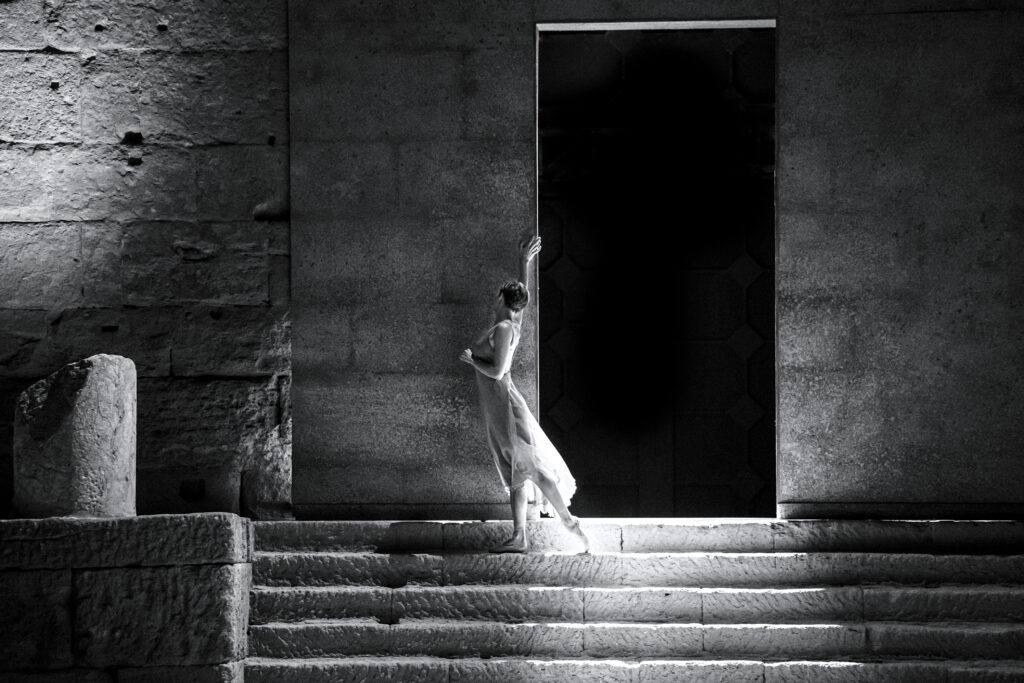
Anna Blackwell, a principal dancer with Les Ballets de Monte Carlo, has performed in upwards of 80 different theaters around the world. Her favorite venue is a first-century AD, Roman-built amphitheater in France called Théâtre Antique d’Orange. “The stone facade of the theater became the backdrop,” Blackwell describes. “I could look directly at the open sky, and the wind naturally added to the movement of the costumes. It felt more immersive, like I was still in the ‘scene’ even as I stepped offstage.”
But your space may also affect you negatively, in ways you don’t realize. Everyday life consists of “onstage” and “backstage” behavior, Klein explains, referencing the theatrical framework coined by sociologist Erving Goffman. In other words, people perform one way in public and another in private. “In architecture, that is where spatial and power dynamics come into play,” Klein says. When there is little to no space for privacy—like a typical dance studio—those personal moments are often saved for places like stairwells and bathrooms.
Mennite says that at the Houston Ballet Center for Dance, space to be alone is rare. “There are so many upsides to having this constant openness and access to each other,” Mennite says, “but it’s also what’s suffered most about the space.” She made this realization after her therapist prompted her to describe the spaces she inhabited day in and day out. The lack of privacy, to Mennite, is comparable to the psychological access that ballet culture often demands. “Often in ballet, we’re asked to override our internal instinct,” Mennite explains, and dancers must do what needs to be done no matter how they may feel.
Interoception is a sense which allows you to gauge how you’re feeling in real time (such as depleted, hungry, or energized). It’s important to acknowledge those internal messages so that they can be addressed. Sometimes that means having a safe place to rest, reset, and even release emotions, like crying. But with no space to decompress—no space for “backstage behavior”—you can grow exhausted or frustrated.
“We can really get caught up in the rhythm of everyone around us,” Mennite says. “I can quickly feel my energy boost zapped and a harder dip in my capacity to focus.”
Adjusting to Your Space
If you feel overstimulated by your dance environment, acknowledge what makes you uneasy, then seek or create a space where you can manage those feelings. “Sometimes you need visual privacy,” Klein notes. “Sometimes privacy from sound. Sometimes privacy in the form of anonymity.”
Mennite, for instance, created a “fort” in the women’s community dressing room. “[It’s a] space for myself where I could have a few minutes of privacy, a place where my own nervous system could be still,” she says. “That’s incredibly important for my mental health and for my ability to tap into that interoceptive quality of what’s going on with me in real time.”
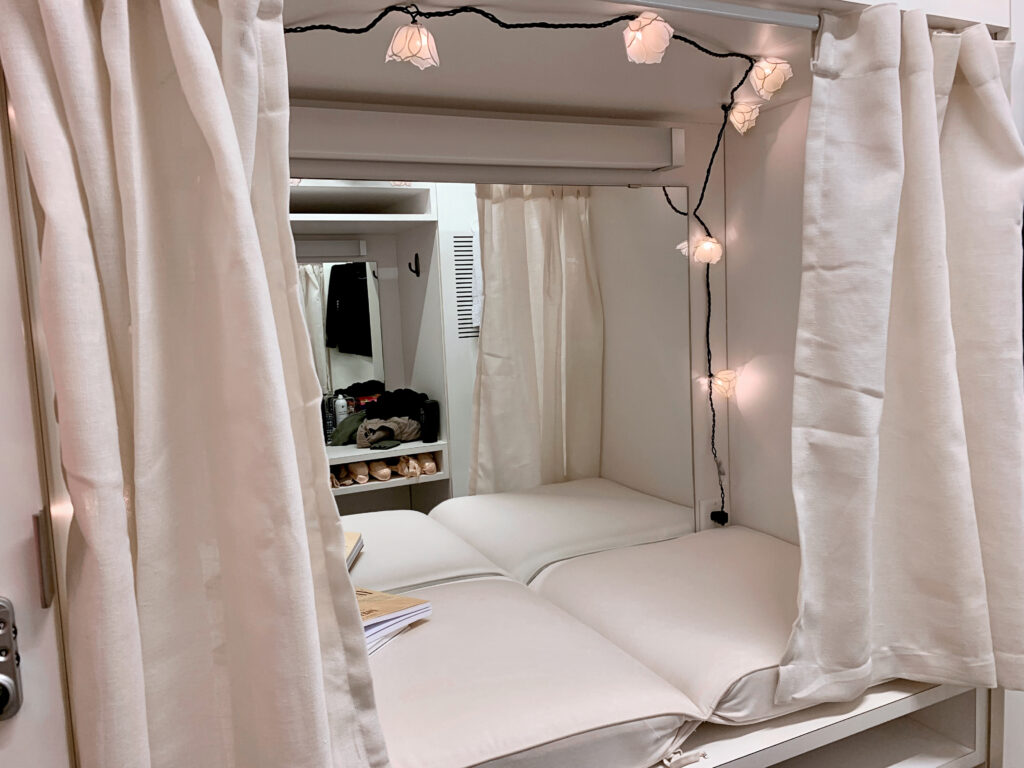
Blackwell tries to find peaceful spaces during the company’s frequent tours. “I performed in a theater that was in the same vicinity as an event or club, so there was loud thudding music in my dressing room,” Blackwell says. “I had to collect all my stuff and find a quiet place to prepare.”
Claiming your own space—like a barre or dressing room spot, or a corner to stow your bag—can be surprisingly important, in that it can give you a sense of control and belonging. Having a predictable anchor to physical territory can help you feel safe and personally connected to the place and your community.
Blackwell does this on tour by bringing her yoga mat with her. “It gives me a consistent space that I can warm up, cool down, or even just sit and rest.”
“Familiarity brings comfort,” Klein adds. In a new space, take time to recognize what may disturb and comfort you so that you don’t face those sensory inputs for the first time while performing. The more familiar you are the better you can process your surroundings and adjust accordingly.
Not all venues or rehearsal studios are designed specifically for dance, of course. In those instances, Blackwell advises dancers to be open-minded. “Not every space is going to be perfect,” she says. “There will be issues, but it’s what you’ve been given, and you have to perform regardless. So try to embrace and enjoy it.”
